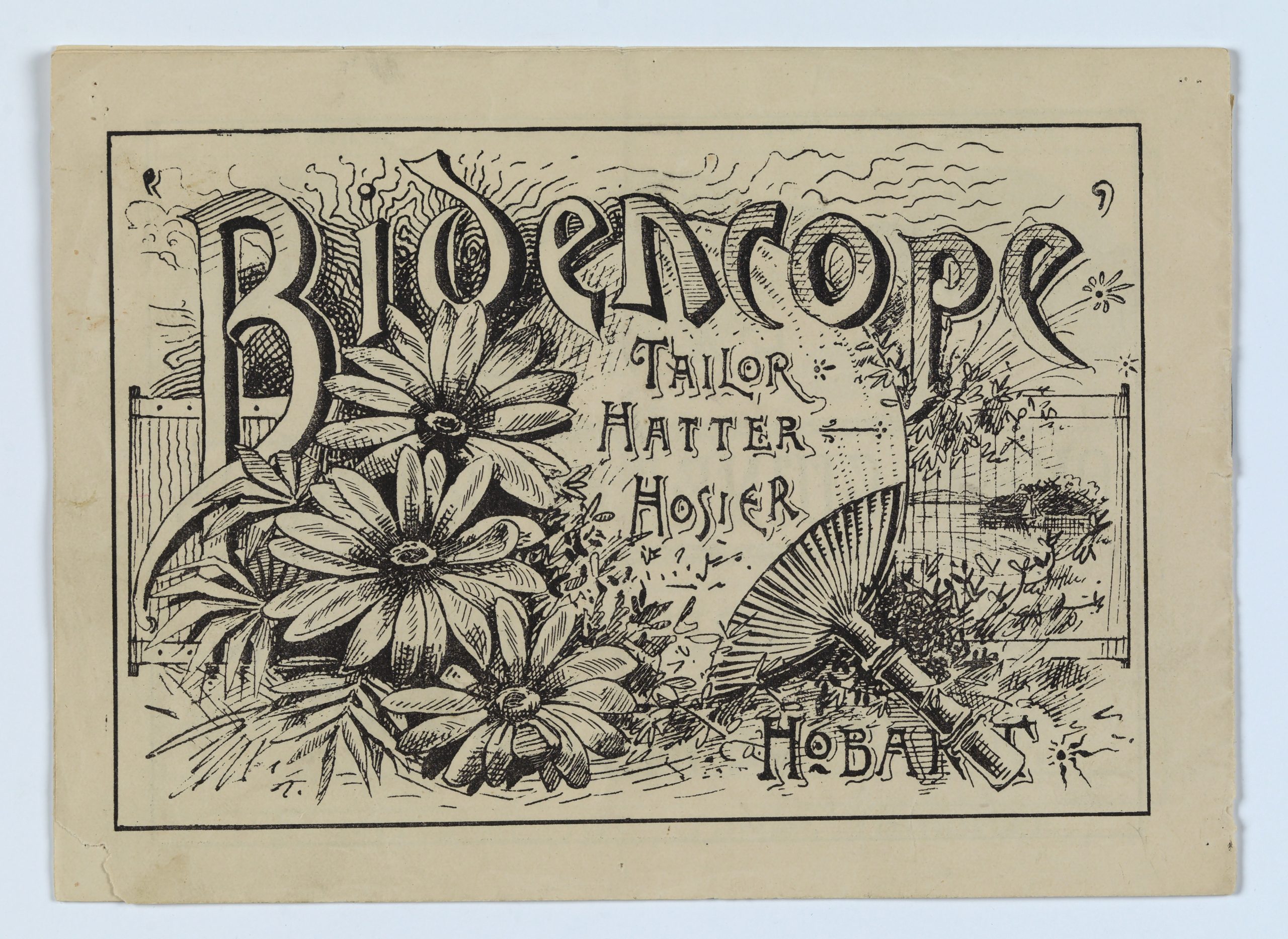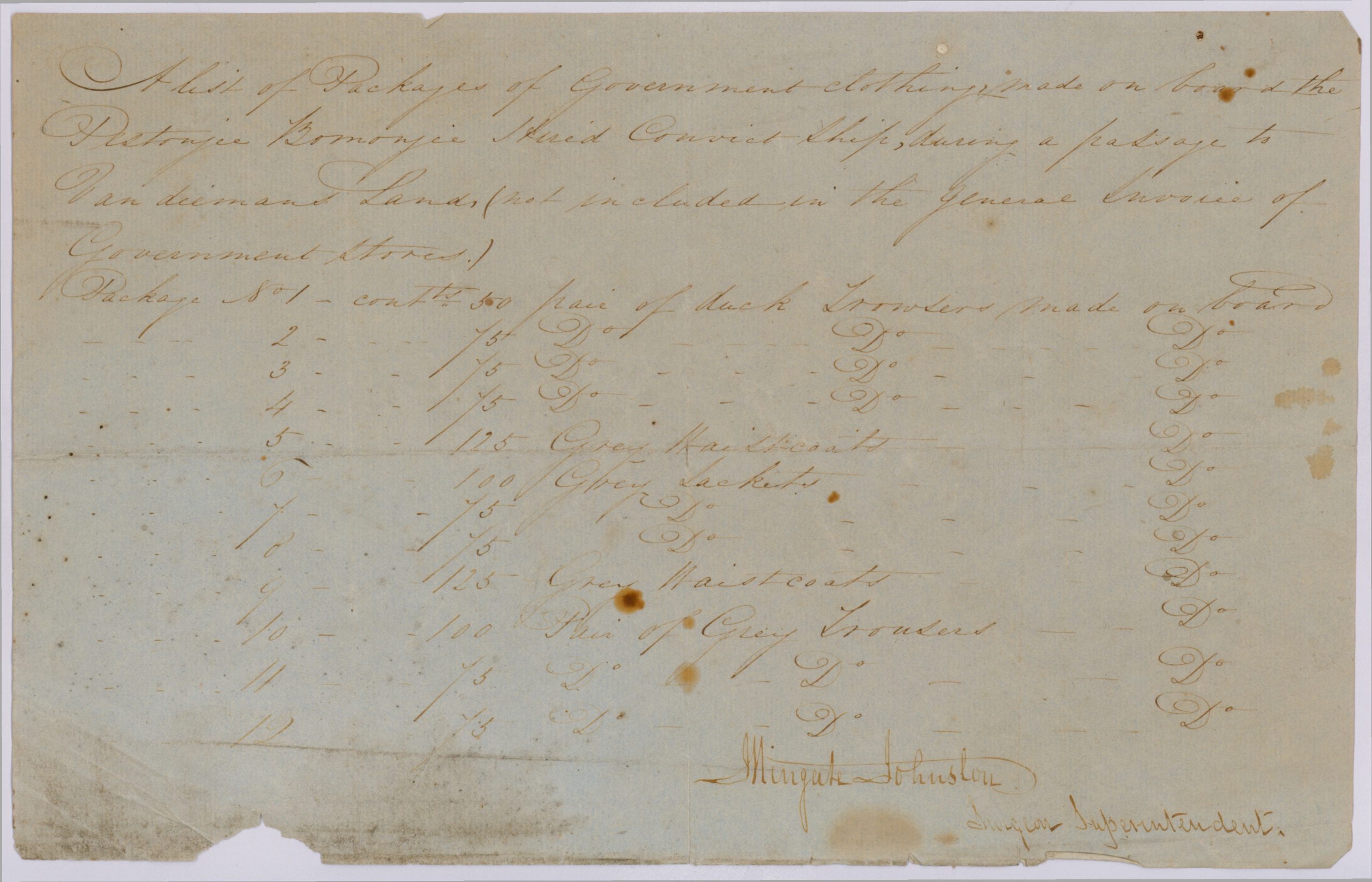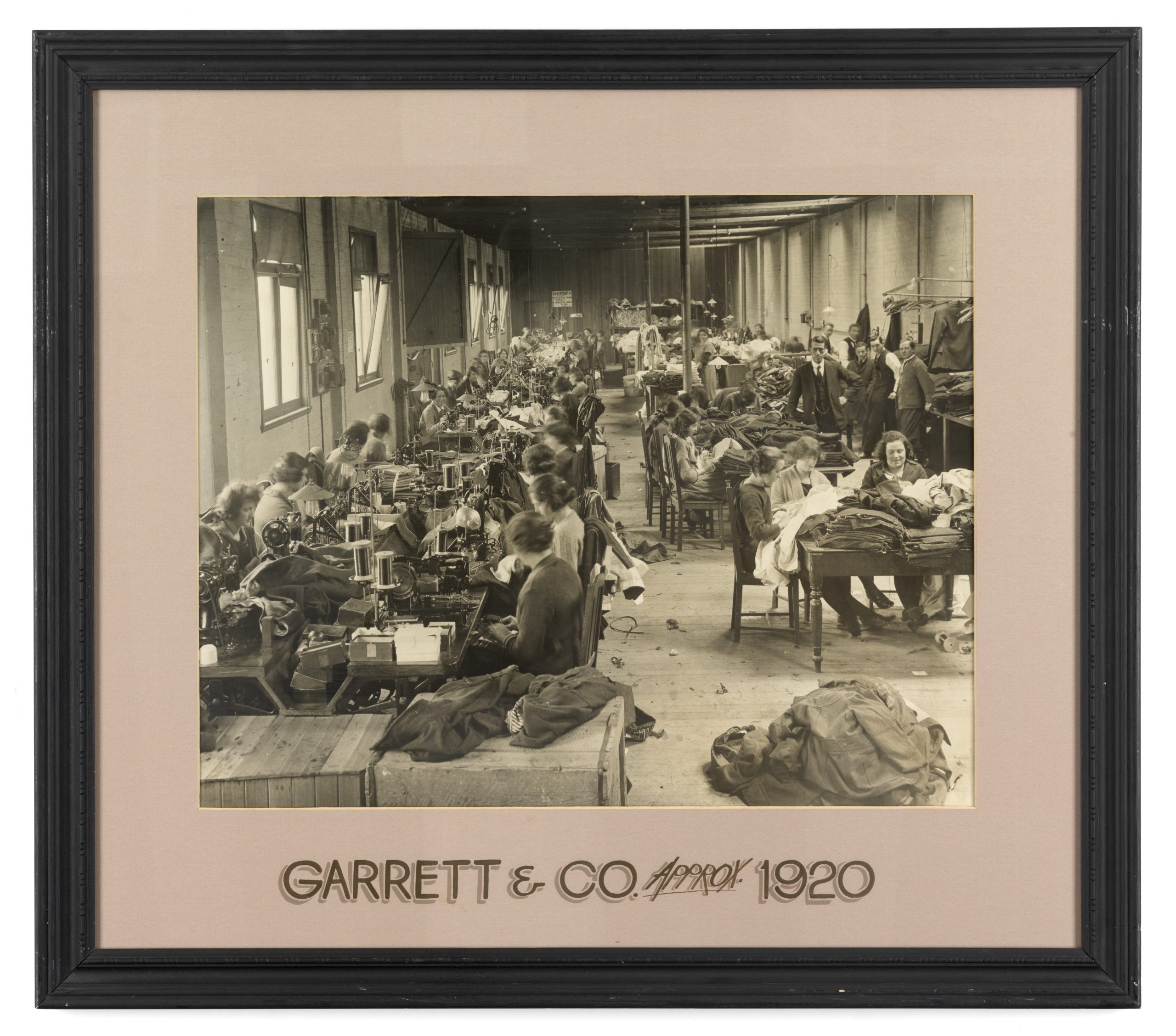Introducing our new exhibition: Duck Trousers, Straw Bonnets, and Bluey: Stories of Fabrics and Clothing in Tasmania

Duck trousers, straw bonnets, and bluey: the history of Tasmanian textiles and clothing is filled with colourful and unique garments, characters, and stories. Stories like that of Joseph Bidencope, a skilful tailor and milliner from Poland, whose popular hats made in Battery Point were exhibited to great success at the Philadelphia International Exhibition in 1876. Or the many stories of the female convicts housed in the factories at Cascades and Ross – some of whom were imprisoned for stealing aprons, bonnets, and jackets – who made, embroidered, and laundered clothing.
These stories- and many more- are at the heart of a new free exhibition Duck Trousers, straw bonnets, and Bluey: Stories of Fabrics and Clothing in Tasmania currently on display in the State Library of Tasmania and Tasmanian Archives Reading Room in Hobart. The exhibition has original records and heritage books from the Tasmanian Archive and State Library collection on display, along with information and images in our new exhibition space.

The exhibition tells five intertwined stories. The first story focuses on the history of the Tasmanian Bluey otherwise known as the Miner’s Bluey, a waterproof and durable coat fashioned for the Tasmanian climate. “A Tale of two Woollen Mills” examines a pivotal series of events in the development of the wool industry in Tasmania in the 1860s and 70s, and in particular how two competing woollen companies were established in the north and the south of the state. The techniques used in tanning for the production of leather (and in particular the unique Tasmanian bark used) and shoemaking in Tasmania is the focus of the third story wall, entitled “We all take our shoes very much for granted.” Another story focuses on “Bidencope’s: Hobart’s House of Quality”, telling the story of the tailor Joseph Bidencope and the renowned retail store that he founded on Murray Street. The final story is entitled “A very serious want of cloathing…” and focuses on convicts making and laundering a range of different clothing. It ends with an examination of a riot at the Launceston Female Factory in 1842, in which the women armed themselves with spindles.

Over the next few months, the State library and Archive Service team will publish a series of blogs that explore in greater depth some of the fascinating stories that we uncovered during our research. These blogs are designed to complement the exhibition, expanding some elements of the exhibition story walls to provide more context and other perspectives.
Whatever in the world are ‘Duck Trousers’?
No animals were harmed in the making of duck trousers! The name comes from the Dutch word for canvas, which is ‘Doek’. Duck trousers were essentially thick linen canvas trousers, not unlike Moleskins. Duck trousers were the most common type of trousers in the early colony of Hobart Town; they would have been worn by both convicts as well as free men and were prized for their durability.
In the exhibition, duck trousers feature on our convict wall, telling the story of how clothes were made by convicts on their way to Van Diemen’s Land. Our story focuses on the men on board the Pestonjee Bomangee, that arrived in Hobart Town in 1845. Amongst the Tasmanian Archive collection we have a list (CON121/1/1) of the various clothing items that were made during this journey, including a lot of duck trousers.

A sneak peak of the images on display
We are really excited to have on display in this exhibition many wonderful images from our Tasmanian Archive and State Library collections. Many of these images have been placed into a Duck Trousers, Straw Bonnets and Bluey Flickr Album for you to enjoy at anytime.
Duck Trousers, Straw Bonnets, and Bluey: Stories of fabrics and clothing in Tasmania will be on show until the end of August.


